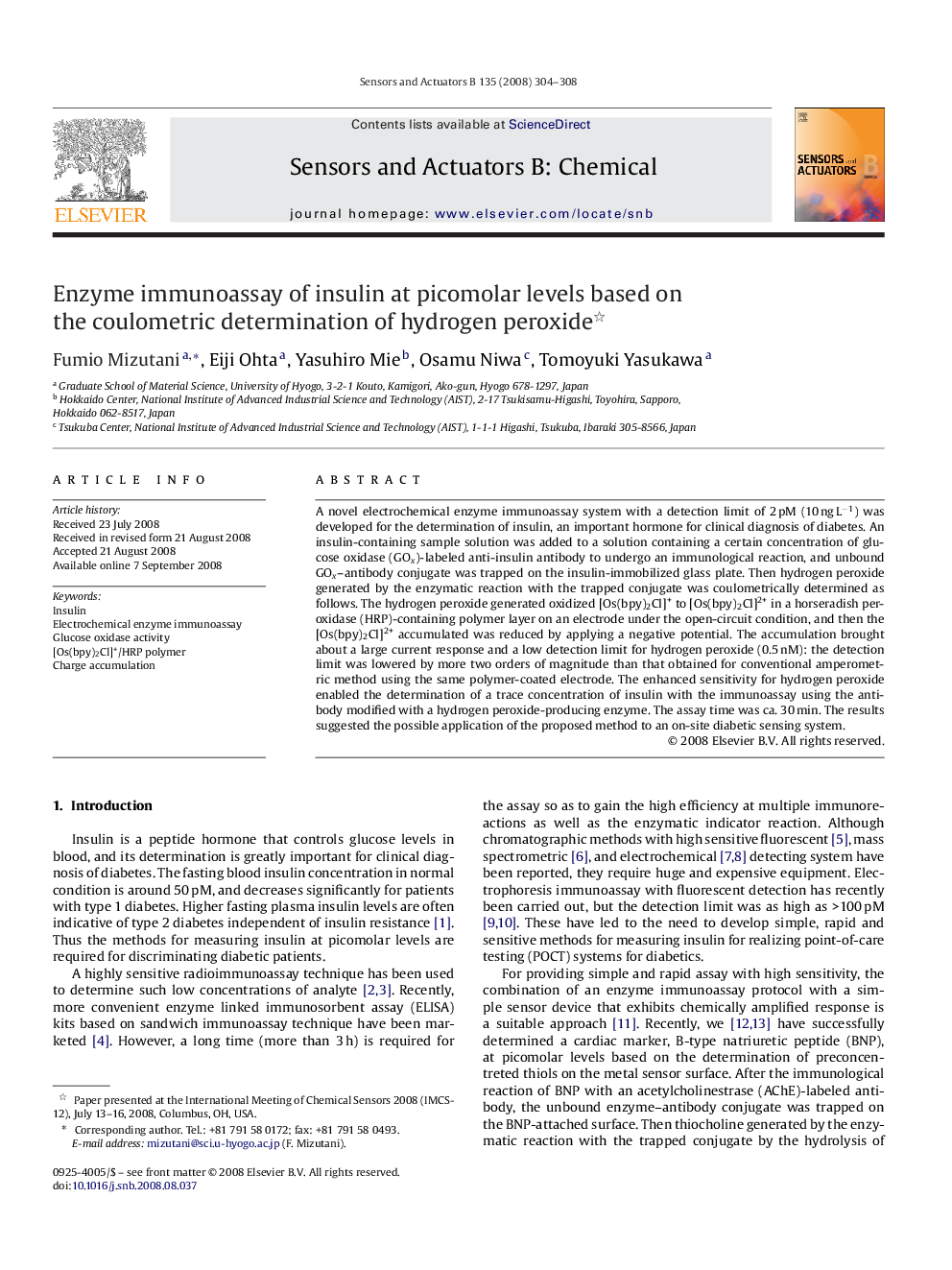| Article ID | Journal | Published Year | Pages | File Type |
|---|---|---|---|---|
| 741163 | Sensors and Actuators B: Chemical | 2008 | 5 Pages |
A novel electrochemical enzyme immunoassay system with a detection limit of 2 pM (10 ng L−1) was developed for the determination of insulin, an important hormone for clinical diagnosis of diabetes. An insulin-containing sample solution was added to a solution containing a certain concentration of glucose oxidase (GOx)-labeled anti-insulin antibody to undergo an immunological reaction, and unbound GOx–antibody conjugate was trapped on the insulin-immobilized glass plate. Then hydrogen peroxide generated by the enzymatic reaction with the trapped conjugate was coulometrically determined as follows. The hydrogen peroxide generated oxidized [Os(bpy)2Cl]+ to [Os(bpy)2Cl]2+ in a horseradish peroxidase (HRP)-containing polymer layer on an electrode under the open-circuit condition, and then the [Os(bpy)2Cl]2+ accumulated was reduced by applying a negative potential. The accumulation brought about a large current response and a low detection limit for hydrogen peroxide (0.5 nM): the detection limit was lowered by more two orders of magnitude than that obtained for conventional amperometric method using the same polymer-coated electrode. The enhanced sensitivity for hydrogen peroxide enabled the determination of a trace concentration of insulin with the immunoassay using the antibody modified with a hydrogen peroxide-producing enzyme. The assay time was ca. 30 min. The results suggested the possible application of the proposed method to an on-site diabetic sensing system.
